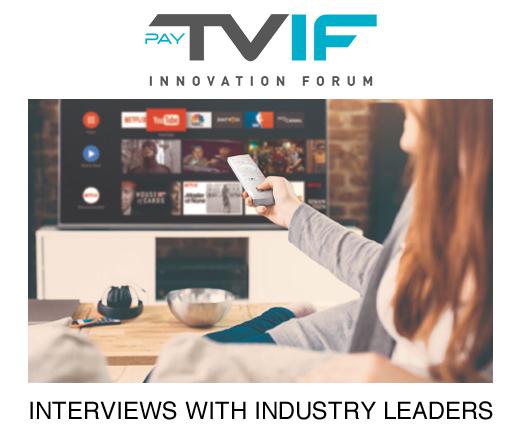
The Pay-TV Innovation Forum is a global research programme for senior pay-TV and content executives, developed by NAGRA and MTM, and designed to catalyse growth and innovation across the global TV industry, at a time of tremendous change and disruption.
As part of the programme, we are publishing a series of interviews with leading TV industry executives from around the world to explore their views, perspectives and experiences of innovation. In this interview, Michael Roedel, Head of TV Design and User Experience at Vodafone Global Enterprise, shares his views on the evolution of the European pay-TV market, growing importance of super-aggregation, key technological priorities for pay-TV providers, and important considerations in user experience design.
What are the key trends and developments shaping the European pay-TV market?
There is one major trend which has been happening for a while and is now starting to accelerate. I call it the ‘segregation’ of content offers. We all know it well from the examples of OTT services like Netflix and Amazon and more traditional media companies like Sky who are all building exclusive content propositions and offer them directly to customers on their owned and operated platforms. I call it ‘segregation’ because it is a painful process from the customers’ point of view as it means managing a growing number of subscriptions and devices. Thankfully, we’re starting to see a counter-trend of super-aggregation, which means offering the next level aggregation of video services for consumers. It is still early days for the concept as not many service providers are pursuing it, but we’re strong supporters of it and have already started implementing it in some of our markets.
Would you be able to tell us more about how you are approaching super-aggregation?
Aggregation of content sources is not a new concept, and we have already seen attempts in the industry to provide aggregator services. Apple TV and Amazon Video were one of the first services that tried to do that. However, super-aggregation does not mean simply providing access to all the different content apps on one platform. Instead, I mean giving users a truly integrated experience in a single interface where they do not need to jump between different apps. When we launched our new Vodafone TV service in Spain in 2016, we started providing this next level of aggregation by integrating linear, recorded, catch-up and third-party on-demand content.
Our customers have multiple entry points to content, which are all interlinked, and we let them decide the source from which they want to watch their selected piece of content. As a result, content from Netflix can appear in line with other pieces of content from other sources, but content – rather than the source – is central to the user interface. Once the user navigates to a specific show such as Peaky Blinders, they can then choose if they want to watch it on Netflix, as a TV channel’s catch-up programme, or purchase it from Vodafone’s TVOD catalogue.
Which TV industry participants are best-placed to pursue this super-aggregation strategy?
I think telcos have a significant strategic advantage over the other market players. Our business case is not based on selling content, but rather on selling Internet access. You can draw parallels between telcos and digital giants like Facebook and Google, which are building digital platforms to then sell advertising on them. For telcos, OTT TV is a great vehicle to sell broadband.
What are the most strategically important areas of innovation opportunity for pay-TV providers to focus on over the next five years?
I think it is important to focus on more pressing and immediate priorities that can make a difference before looking at the five-year horizon. I think any forward-looking pay-TV provider should make it their priority to have a 100% cloud-based platform, to ensure their customers have complete freedom to access all of their content wherever they are. However, as an industry, we are still far away from being able to offer that. At Vodafone, we have successfully deployed a pay-TV service that is fully cloud-based – we do not even have a hard drive in our set-top boxes.
With the success of OTT boxes and HDMI dongles like Chromecast we are seeing that customers want to have small or no set-top boxes, around the big TV screen, they want access on any device, and they do not want to get locked out because of too many devices being connected simultaneously. However, true “anytime anywhere” access to content is still not widely available across many European markets. Most of that is due to content rights holders not wanting to provide rights for cloud recording.
In your opinion, which UX and UI features will have the most significant impact on the pay-TV industry during the next five years?
Much more can still be done to make the pay-TV user interface lighter. With the volume of content growing, there is a risk that your home video entertainment experience becomes overcrowded and a bit dry as your customers spend more and more time trying to find what they want to watch. To make this a more appealing experience, you cannot overwhelm the user with the first screen they look at – it needs to provide an interesting entry point. You can also use features like interface transparency and programmes running in the background to make the whole experience more engaging and entertaining. You can then progressively release more content to the user and help them discover the catalogue. I see a lot of potential in new technologies like artificial intelligence, big data and voice to support these experiences. AI and big data will have to underpin great content discovery and recommendation engines. Voice, on the other hand, has the potential to reduce the requirements for what we need to put into a user interface and on a remote, to make them much lighter. However, we are still a long way away from realising the potential of these new technologies.
